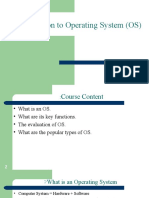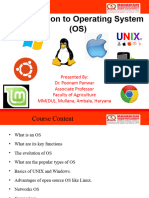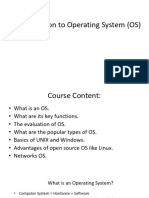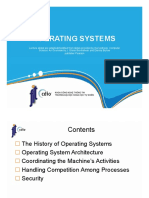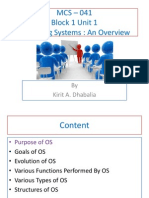0% found this document useful (0 votes)
26 views39 pagesOS Functions and Components Guide
The document discusses the components and functions of an operating system. It describes basic computer system components like the CPU, memory, and I/O modules. It then explains common processor registers and memory structures. Finally, it lists several key functions and services provided by operating systems, such as I/O handling, program execution, fault detection, and resource management.
Uploaded by
aptinstallpython3Copyright
© © All Rights Reserved
We take content rights seriously. If you suspect this is your content, claim it here.
Available Formats
Download as PDF, TXT or read online on Scribd
0% found this document useful (0 votes)
26 views39 pagesOS Functions and Components Guide
The document discusses the components and functions of an operating system. It describes basic computer system components like the CPU, memory, and I/O modules. It then explains common processor registers and memory structures. Finally, it lists several key functions and services provided by operating systems, such as I/O handling, program execution, fault detection, and resource management.
Uploaded by
aptinstallpython3Copyright
© © All Rights Reserved
We take content rights seriously. If you suspect this is your content, claim it here.
Available Formats
Download as PDF, TXT or read online on Scribd
/ 39

